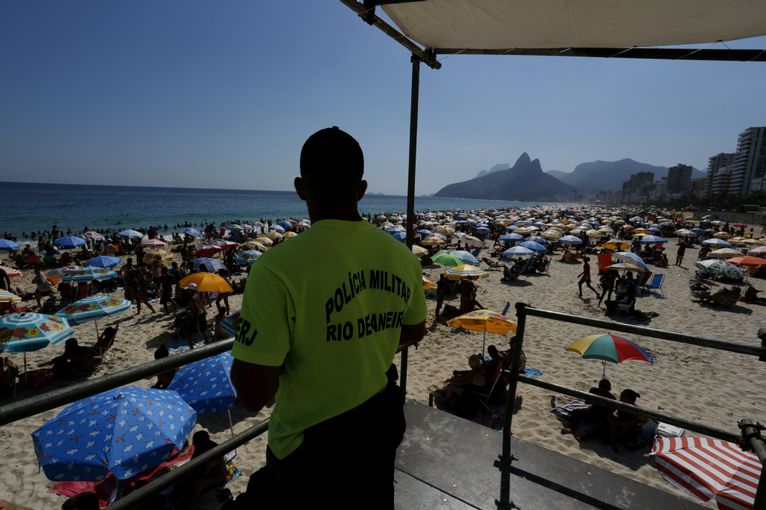For those who live in Rio de Janeiro, the mass robberies that sweep the beaches known locally as “arrastões” (big drags) have been a way of life, but recent years have seen an increase and authorities are struggling to react. This last weekend the iconic beaches of Ipanema and Arpoador were attacked again, and this time the violence spilled out across Zona Sul (South Zone).

In reaction to the sense of chaos the president of the Brazilian Association of Hotels (ABIH), Alfredo Lopes, criticized the performance of the police and said that two conferences were canceled recently in the city because of episodes of violence prior to the weekend.A partial report released on Monday by the Civil Police show that between Saturday and Sunday, 22 teenagers and six adults were seized, all caught in the act of robbery or theft in Zona Sul. Police found necklaces, watches and mobile phones on all the accused bandits.
Lopes told O Globo, “Every year history repeats itself. It has arrastões, and the [police] reinforce policing only the following week. It needs to take preventive action and intelligently.”
In November 2013 State Secretary of Safety José Mariano Beltrame vowed to reinforce policing on Zona Sul beaches with an additional six hundred military police officers, among other initiatives, in response to a wave of mass robberies conducted that year.
The initiative to increase patrolling on Rio’s beaches included reinforcement from the Shock Battalion troops that were to guard the beaches: from where the water hits the shore to the bus stops that line the streets alongside Leme, Copacabana, Ipanema and Leblon. The increased police presence would operate from 9AM to 7PM on weekends and holidays.
Last November (2014) the first integrated center to help process youngsters opened in Laranjeiras with the objective of steering youths away from crime and illegal activities. “We are all in this together,” said Rio’s vice-mayor, Adilson Pires, who heads the Secretaria Municipal de Desenvolvimento Social – SMDS (City’s Social Development Secretary).
The center was intended to work with professionals from the child-welfare department and human rights agencies to process the youth, find his family, and if possible return him to his municipality. The SMDS also announced plans to expand access to cultural and sporting activities with the objective of reducing the idle time of these youths.
However the attempts to predict and prevent large groups of young men from getting to the beaches has met resistance as accusations of racial profiling and outrage about the treatment of black youths. The tactic of stopping buses from Zona Norte (North Zone) and divert young men from going to the beach has proved highly controversial and left authorities looking for other security solutions.
Meanwhile, many wonder where the police were last weekend, as expatriate Richard Mould shared with The Rio Times. “Where are the police, on strike? If this continues it is only a matter of time that Rio regains the reputation that this is a dangerous city and tourist numbers start to decline, do we need that with the current [economic] crisis?”
“How do you think the tourist feels seeing people having to resort to using the sun umbrellas to beat the kids off and when people acting like vigilantes have to resort to chasing and catching the kids only to release them as there are no police. This is shameful for Rio and shocking for the tourists.”